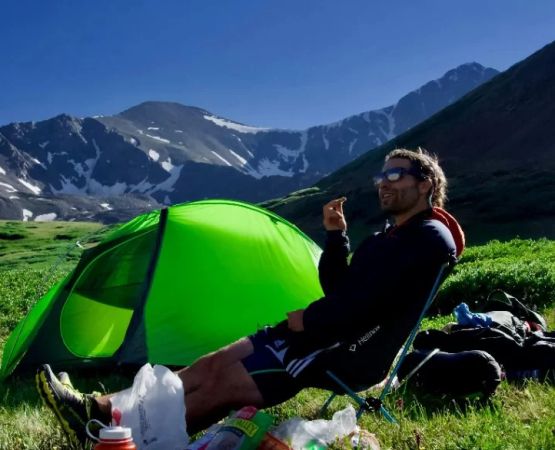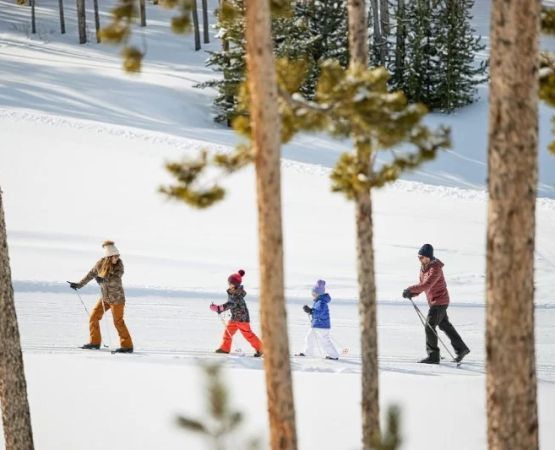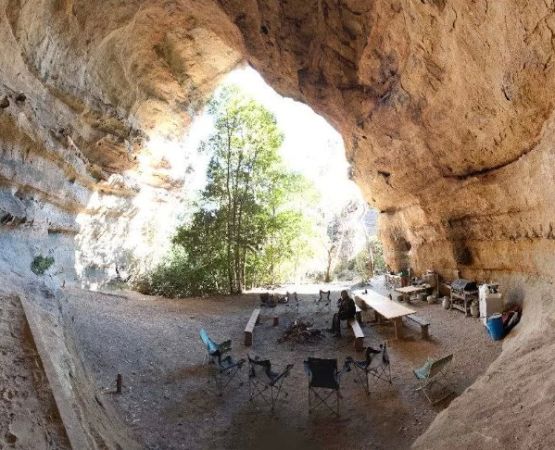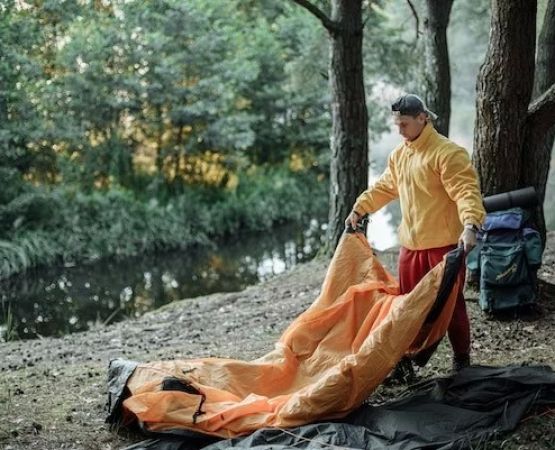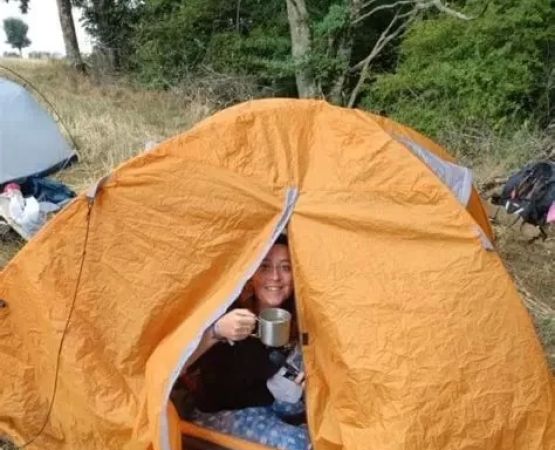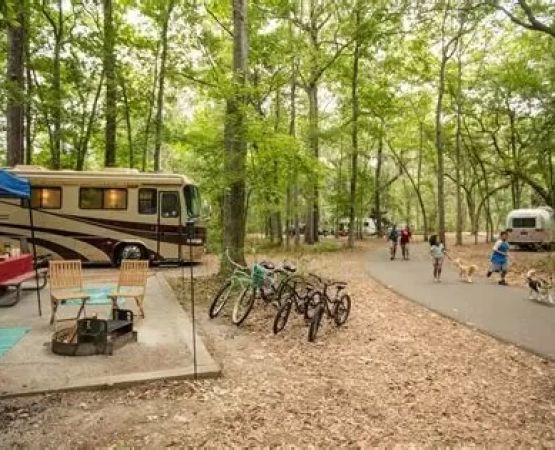- What Are Stepped Escarpment Zones?
- Challenges of Camping in Stepped Escarpments
- Essential Gear for Camping in Escarpment Zones
- Effective Camping Strategies for Stepped Escarpment Terrain
- Real-World Case Study: Escarpment Camping Experience
What Are Stepped Escarpment Zones?
Stepped escarpments are naturally occurring landforms characterized by steep, multi-tiered slopes or cliffs. These zones are often found in mountainous or hilly regions where geological processes have created a series of steps or terraces. The unique terrain presents both challenges and rewards for adventurers and campers alike. While they offer breathtaking views and the opportunity for unique outdoor experiences, they also require special planning and skills for safe and effective camping.
In stepped escarpments, the land rises sharply in a series of steep steps or terraces. These steps can vary in size, sometimes forming steep cliffs, other times appearing as gentle slopes between terraces. The natural beauty of these regions often makes them appealing camping destinations, but the rugged terrain demands respect, proper planning, and the right gear to ensure a successful and enjoyable experience.
Challenges of Camping in Stepped Escarpments
Camping in stepped escarpments offers unparalleled views and a sense of adventure, but it also presents specific challenges that must be considered before embarking on a trip. Here are some common obstacles campers may face in these regions:
1. Steep and Uneven Terrain
The primary challenge of camping in escarpment zones is the steep, uneven terrain. Finding level ground for your tent can be difficult, especially on the upper terraces or along the slopes. The terrain can also make navigation challenging, particularly when hiking between the various levels of the escarpment.
2. Weather Conditions
Stepped escarpments can have varying microclimates depending on elevation, orientation, and local weather patterns. At higher elevations, temperatures may drop quickly, and the weather can change suddenly. Rain and wind can also be more intense at the top of the escarpment, making camping conditions less than ideal if not properly prepared.
3. Limited Access to Water Sources
Water sources can be limited in stepped escarpment zones. Streams and rivers may be difficult to access due to the rugged terrain, and some higher regions may lack natural water sources altogether. It's important to plan for water storage or carry water filtration systems when camping in these areas.
4. Safety Concerns
The steep slopes can be risky, especially when hiking in poor weather or after dark. A fall from a high terrace or along a cliffside can be dangerous, so careful attention to safety is essential. Having proper footwear and knowing how to navigate tricky terrain is crucial for preventing accidents.
Essential Gear for Camping in Escarpment Zones
Successfully camping in stepped escarpment zones requires specialized gear that can help you tackle the unique challenges of the terrain. Below are some essential items to include in your camping kit when heading into these rugged environments:
1. Lightweight and Durable Tent
Given the uneven ground, it’s important to choose a tent that can accommodate slopes and uneven terrain. A four-season tent that’s both lightweight and durable is ideal for escarpment camping. Look for tents with adjustable poles that can be staked securely, even on uneven surfaces.
2. Quality Footwear
Stepped escarpments often involve hiking on steep and rocky surfaces, so high-quality hiking boots with ankle support are a must. Ensure that the boots are waterproof, breathable, and have a non-slip sole to handle the challenges of escarpment terrain.
3. Water Filtration System
Since water sources may not always be accessible or reliable, carrying a portable water filtration system is essential. A lightweight, easy-to-use system like a pump filter or a gravity-fed filtration system can ensure that you stay hydrated even in remote locations.
4. Navigation Tools
In areas with complex terrain, having a map, compass, or GPS device is crucial. The terrain can obscure landmarks, so having precise navigation tools will help you stay on track and avoid getting lost in the wilderness.
5. Climbing Gear (If Necessary)
If you're planning to scale steep cliffs or navigate the higher terraces of the escarpment, consider bringing climbing gear. A basic set of ropes, carabiners, and harnesses may be necessary to ensure safe movement in difficult sections of the terrain.
Effective Camping Strategies for Stepped Escarpment Terrain
To make the most of your camping experience in stepped escarpment zones, here are a few strategies to consider:
1. Plan Your Campsite Carefully
Before setting up camp, scout the area for flat, stable ground. If you’re camping on a higher terrace, make sure there are no sudden drops or unstable rock formations nearby. Look for natural windbreaks like large boulders or trees to help shield your campsite from the wind, especially if you're camping at a higher elevation.
2. Adapt to Changing Weather
In stepped escarpment zones, the weather can shift quickly, especially at higher elevations. Be prepared for sudden rain, high winds, and temperature drops. Having a solid rain jacket, thermal layers, and a windproof shelter will help you stay comfortable when conditions change.
3. Start Your Hike Early
To avoid the heat of midday or the potential for bad weather, start your hikes early in the morning. This will give you more time to navigate the escarpment safely before the conditions change. Early starts also give you plenty of time to set up camp before nightfall.
4. Respect the Environment
When camping in steep or fragile environments like escarpments, it’s crucial to minimize your impact on the land. Stick to established trails, pack out all waste, and avoid disturbing wildlife. Leave no trace principles should be followed to preserve the natural beauty of the escarpment zones for future adventurers.
Real-World Case Study: Escarpment Camping Experience
A recent camping trip by a group of outdoor enthusiasts to a stepped escarpment zone in the Appalachian Mountains serves as a perfect example of how to plan and execute a successful adventure in such terrains. The group, experienced hikers and campers, carefully selected their campsite on a stable terrace to avoid the steepest sections. They used ropes to navigate the more challenging parts of the escarpment and carried enough water to last them for the entire trip.
Despite facing unpredictable weather conditions and the difficulty of accessing water sources, the group thrived due to their careful preparation and the use of proper gear. This experience underscores the importance of preparation and safety when camping in escarpment zones.
If you're looking for the best camping gear or want more information on how to plan your escarpment adventure, visit Pine Cliff Resort for expert advice and recommendations on products that can enhance your outdoor experience.

